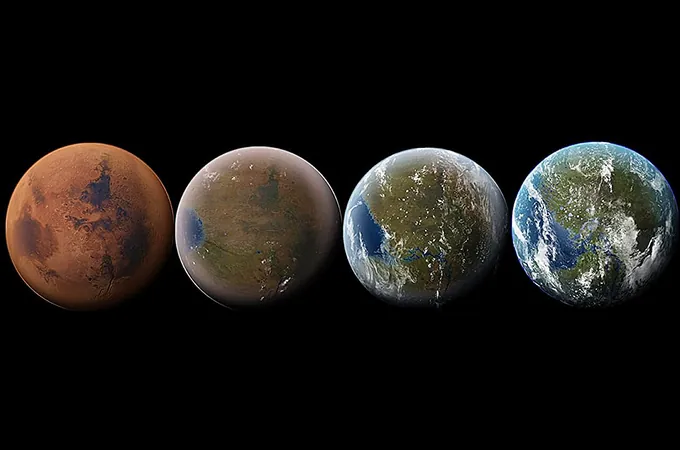
Unveiling Bold Plans to Heat Up Mars: Could Human Life Be Within Reach?
2025-04-04
Author: Emily
As humanity gears up for an ambitious journey to Mars, multiple exploration missions—both robotic and manned—are on the horizon. The overarching aim? To determine the feasibility of human settlement on the Red Planet. This colossal task requires not just innovative technologies but also resources such as building materials and water. We must recreate Earth's nurturing environment, essentially transporting a slice of our planet's ecosystem across the void of space.
These efforts, often referred to as "terraforming," could revolutionize Mars by making it "Earth-like." For over half a century, scientists and researchers have proposed various methods to make this dream a reality.
Recently, an interdisciplinary team unveiled a groundbreaking strategy to warm Mars' atmosphere by utilizing nanoscale aerosols composed of graphene and aluminum. This innovative approach could herald the first significant steps toward terraforming, as their research indicates the Martian atmosphere can indeed be manipulated for warming purposes. The findings were led by Edwin S. Kite of the University of Chicago, along with an impressive roster of collaborators from renowned institutions such as NASA’s Jet Propulsion Laboratory, MIT's Haystack Observatory, and others. These results were presented at the prestigious 2025 Lunar and Planetary Science Conference.
So, how exactly would we go about warming Mars? The process of terraforming can be summarized in three interconnected steps:
1. Warm the Atmosphere:
The initial phase involves raising temperatures to encourage atmospheric transformation.
2. Thicken the Atmosphere:
A thicker atmosphere will act as a protective shield and foster better conditions for liquid water.
3. Melt the Polar Caps and Permafrost:
In the final step, the Martian polar ice caps and permafrost will melt, leading to the release of liquid water and additional gases, including carbon dioxide, which will further amplify atmospheric warming.
As the polar ice melts, water will flow across the planet, while dry ice from the polar caps sublimates, releasing even more CO2 into the atmosphere. According to Mars advocate Robert Zubrin's influential book, “The Case for Mars,” this transformation could allow the atmospheric pressure to increase to around 300 millibars—equivalent to approximately 30% of Earth's sea level pressure. This would create conditions favorable enough for humans to venture outside without bulky pressure suits, albeit still needing appropriate clothing and oxygen supplies.
The implications of this research are monumental: terraforming could turn Mars into a habitable environment, opening up a new chapter for human exploration and possibly even colonization. As scientists continue to explore these groundbreaking theories, the dream of living on Mars may not be as far-fetched as it once seemed. Could we truly become interplanetary beings in the near future? The answer might just lie in the innovative solutions being explored today. Stay tuned as we follow this exciting scientific journey that could change the course of humanity forever!









 Brasil (PT)
Brasil (PT)
 Canada (EN)
Canada (EN)
 Chile (ES)
Chile (ES)
 Česko (CS)
Česko (CS)
 대한민국 (KO)
대한민국 (KO)
 España (ES)
España (ES)
 France (FR)
France (FR)
 Hong Kong (EN)
Hong Kong (EN)
 Italia (IT)
Italia (IT)
 日本 (JA)
日本 (JA)
 Magyarország (HU)
Magyarország (HU)
 Norge (NO)
Norge (NO)
 Polska (PL)
Polska (PL)
 Schweiz (DE)
Schweiz (DE)
 Singapore (EN)
Singapore (EN)
 Sverige (SV)
Sverige (SV)
 Suomi (FI)
Suomi (FI)
 Türkiye (TR)
Türkiye (TR)
 الإمارات العربية المتحدة (AR)
الإمارات العربية المتحدة (AR)